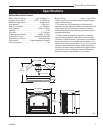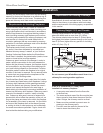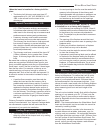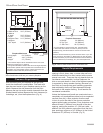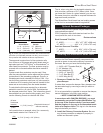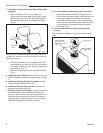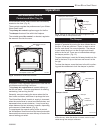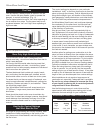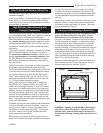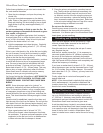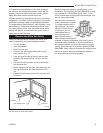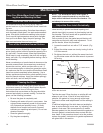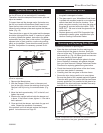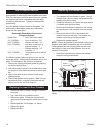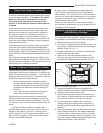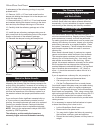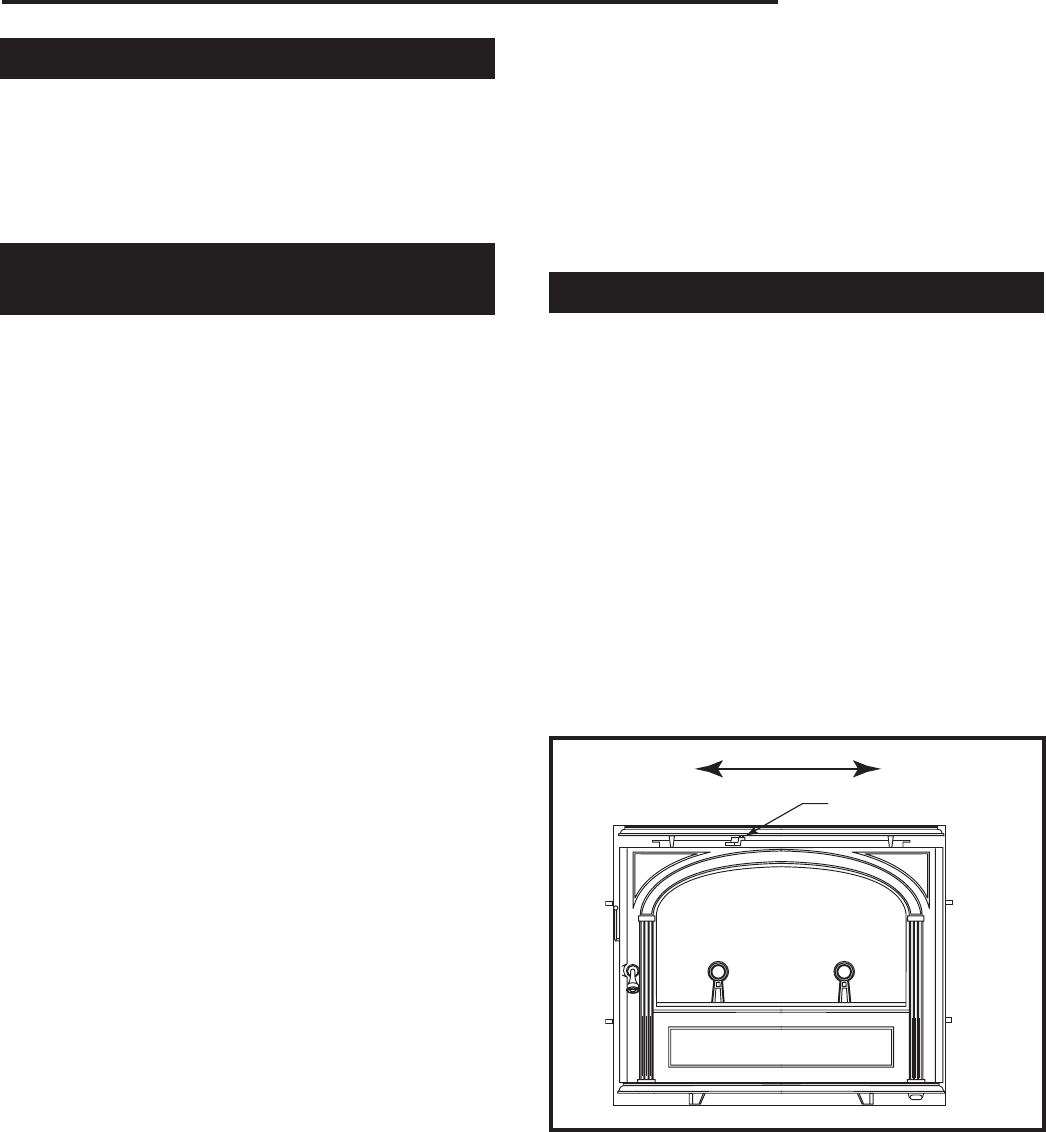
11
WinterWarm Small Insert
2000888
How To Build and Sustain a Wood Fire
A WinterWarm Small Insert leaves the factory with the
combustor installed.
In the United States, it is against the law to operate this
wood heater in a manner inconsistent with operating
instructions in this manual, or if the catalytic combustor
is deactivated or removed.
High-Efficiency Wood Burning with
Catalytic Combustion
The components of the catalytic combustion system in
your WinterWarm Small Insert work together to produce
optimum conditions for secondary combustion.
When the damper is closed, smoke is directed through
the catalytic element, which causes ignition of smoke
at temperatures of 450°-550°F (230°-290°C), half the
temperature normally required for unaided secondary
combustion.
The catalytic element is a ceramic “honeycomb” coated
with the catalytic material. The element is located in
the secondary combustion chamber, molded from a
special high-temperature insulating refractory mate-
rial. The design of the chamber provides the correct
environment necessary for secondary combustion of
the fuel (smoke).
Catalytic combustion is activated by closing the damp-
er, thereby exposing the smoke to the combustor.
Closing the stove damper may also reduce the draft, so
to avoid putting out the fire or deactivating the combus-
tor, close the damper only when a fire is well-estab-
lished. When starting a fire, wait until the fire is well
established and there is an ember bed of at least 3-4”
(76 - 102mm) before closing the damper.
Never kindle a fire with colored paper or paper that
has colored ink or a glossy surface, and never burn
treated wood, garbage, solvents, or trash. All of these
may poison the catalyst and prevent it from operating
properly. Never burn cardboard or loose paper except
for kindling purposes. Never burn coal; doing so can
produce soot or large flakes of char or fly ash that can
coat the combustor and cause smoke to spill into the
room. Coal smoke also can poison the catalyst so that
it won’t operate properly.
In general, the fire must be sufficiently well-established
to ensure that catalytic activity is initiated. When first
starting a fire, a medium- to high- firing rate must be
maintained for at least twenty minutes. This ensures
the stove, catalyst, and fuel are all stabilized at the
proper operating temperatures.
Even though it is possible for the fire to get quite hot
within a few minutes after a fire is started, the combus-
tor may stop working or the fire may go out if the fire
is allowed to die down immediately as a result of the
damper being closed. Once the combustor starts work-
ing, heat generated by burning the smoke will keep it
working.
To determine whether the combustor is operating, com-
pare the amount of smoke leaving the chimney when
the damper is open and when it is closed. This proce-
dure is described on Page 17.
Starting and Maintaining a Wood Fire
Burn solid wood fuel only in the WinterWarm Small
Insert, and burn it directly on the grate. Do not
elevate the fuel. Do not burn coal or other fuels.
Cast iron is a superior material for solid fuel stoves but
it must be treated with respect. It is extremely strong,
but can be broken with a sharp blow from a hammer
or from the thermal shock of rapid and extreme tem-
perature changes. It is important to temper the cast iron
plates with an initial series of 3-4 break-in fires. The
plates expand and contract with changes in tempera-
ture. Minimize thermal stress by allowing the plates to
adjust gradually during the break-in fires by following
Steps 1-3 on the following page.
Always be certain the damper is open when starting a
fire or when re-fueling. To open the damper, lift up on
the lever and move it to the right. (Fig.12)
FP1102
WWsi
damper controls
4/01
Closed Open
FP1102
Damper Control Lever
Fig. 12 Damper control.
WARNING: Operate your WinterWarm Small Insert
only with the door fully closed. If the door is left
partially open, gas and flame may be drawn out of
the fireplace opening, creating risks of both fire and
smoke.



